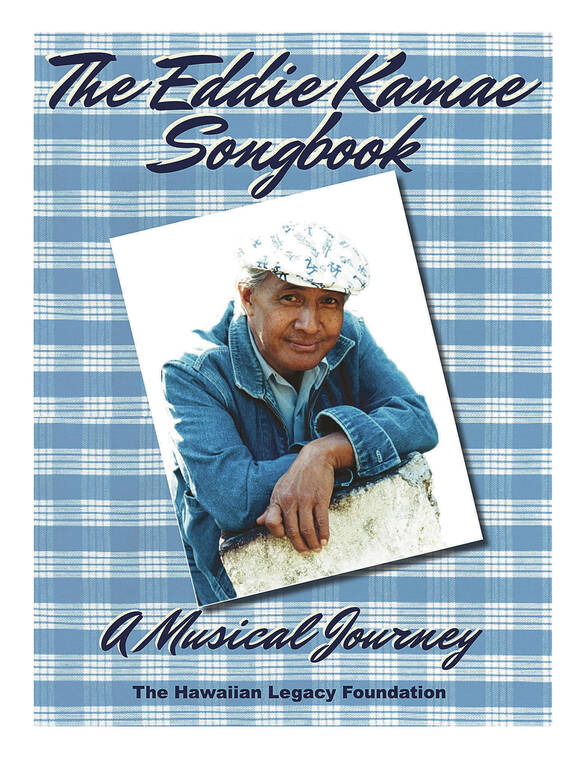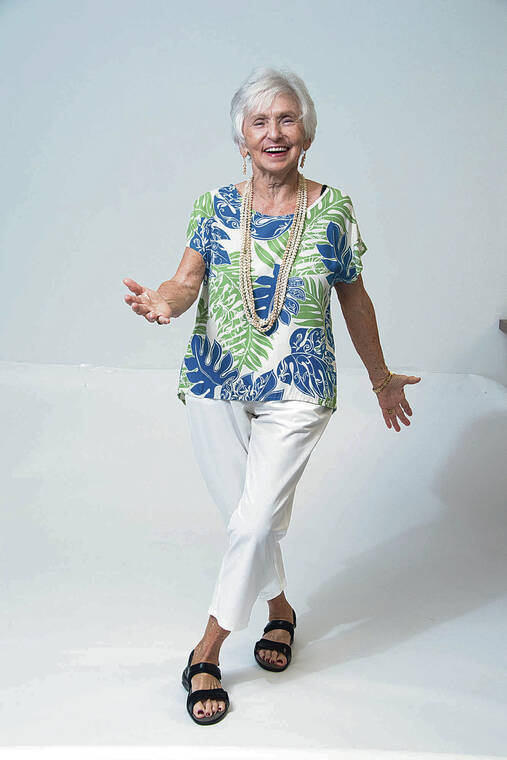Myrna Harmer was in her final semester at the University of Utah in 1964 when a friend in Hawaii invited her over for a visit. Her academic adviser, who also happened to be her uncle, recommended she take her final exams early and make the trip. She arrived in December, enjoyed her stay and then returned home. A second visit to Hawaii in 1965 changed her life forever. That was when she met an ukulele player by the name of Eddie Kamae.
On Aug. 3, 1966, Myrna Harmer became Mrs. Eddie Kamae, and for the next 50 years they were partners in life. She was there behind the scenes as Eddie led the Sons of Hawaii from 1960 through the decades, and as he dealt with the changes that came with the deaths of two original members. She was his partner in the production of a series of documentary films that preserved the music and memories of Hawaiian kupuna who were the last living links to the Hawaiian culture of the 19th century.
Eddie died a few months after the couple celebrated their 50th wedding anniversary. Myrna has kept his music alive and his larger cultural legacy accessible through the Hawaiian Legacy Foundation.
Today, May Day 2022, Myrna and the foundation are celebrating with the digital release of “The Eddie Kamae Songbook: A Musical Journey,” a collection of 34 songs that are relevant to her husband’s life as a musician and recording artist, filmmaker and a son of Hawaii. Each song is presented with its lyrics, English translation, information about the history and context of the song, questions for classroom use, music sheets, audio and video clips, and a bibliography. The book is available free of charge today at eddiekamaesongbook.org Opens in a new tab.
The launch is being celebrated today at the Royal Grove in the Royal Hawaiian Center from noon to 6 p.m. Entertainment will be provided by four former members of the Sons of Hawaii — Paul Kim, Analu Aina, Mike Kaawa and Ocean Kaowili — and also Ocean &the Grandsons of Hawai‘i, Waipuna and the Waimanalo Sunset Band.
The festivities will be streamed on the center’s Facebook page. Visit 808ne.ws/kamae.
Congratulations on the book. It is really the complete package.
Thank you. It was a journey that we hope will express what Eddie wanted to leave for the children. When we started it, it was because of a few musicians asking me for songs. Then (University of Hawai‘i-West O‘ahu) Chancellor Maenette Benham said, “Why don’t you do a song book?” We didn’t have any idea about how hard a project it would be and how long it would take.
How did you put it together?
It’s a collaboration between the Hawaiian Legacy Foundation, UH-West O‘ahu and ‘Ulu‘ulu: The Henry Guigni Moving Image Archive. And there’s a group of three of us, we call ourselves Hui Hana. Lilinoe Andrews is a curriculum specialist, a writer and translator from UH-West O‘ahu. Kapena Shim, who had been our archivist for seven years, also speaks Hawaiian, and a lot of the audio and video resource materials came out of working with Kapena. I’m the third one, and I furnished a lot of the material every Saturday for two years from 9 to 11 a.m. when we would talk about what we’d found, go over every line in the song and just go through the whole thing. Aaron Sala from UH-West O‘ahu helped us with the music scores, a group of ethnomusicologists got the music transcripts and Ocean Kaowili did the chord charts — for free.
I’m sure that I speak for countless people in saying that this is a wonderful way to keep Eddie’s music available.
When Eddie passed, he felt he had finished his work. A couple of days before he passed away, he looked at me and he said “Myrna, I’ve done what I came here to do. I’ve finished my work.” But he really did leave us a lot to do. Maenette Benham came to see him, and she told him, “Don’t worry, Eddie. Your work will always be with the children.” That gave Eddie a lot of peace because he always wanted to make sure that, you know, all the things that he’d been working with all these years had a chance to live on. Of course, it always lives on to the musicians, but also that it would live on in the schools.
Stepping away from the book for a moment, and something I’ve never asked you: How did you meet Eddie?
I came back (to Hawaii) in ‘65, and on Christmas Day I had gone to Lahaina to help some friends take over a restaurant called Pineapple Hill. Eddie and his roommate, Raymond Kane, were there to play music on the lanai. I walked up to the door — I really hadn’t heard authentic Hawaiian music before — and I didn’t move for an hour and a half or two hours. Then my boss came and asked me to go up (the hill) and open the restaurant. So I did, and I felt kind of sad thinking I’d probably never see that ukulele player again. But that night he came up to Pineapple Hill and played music, and we went into town together, and were together from the time the moon went into the ocean and till today.
What are you looking at going forward?
Now that we’re launching the song book, the next thing we will do is an education program working with teachers, and save what they feel are the most important things.






